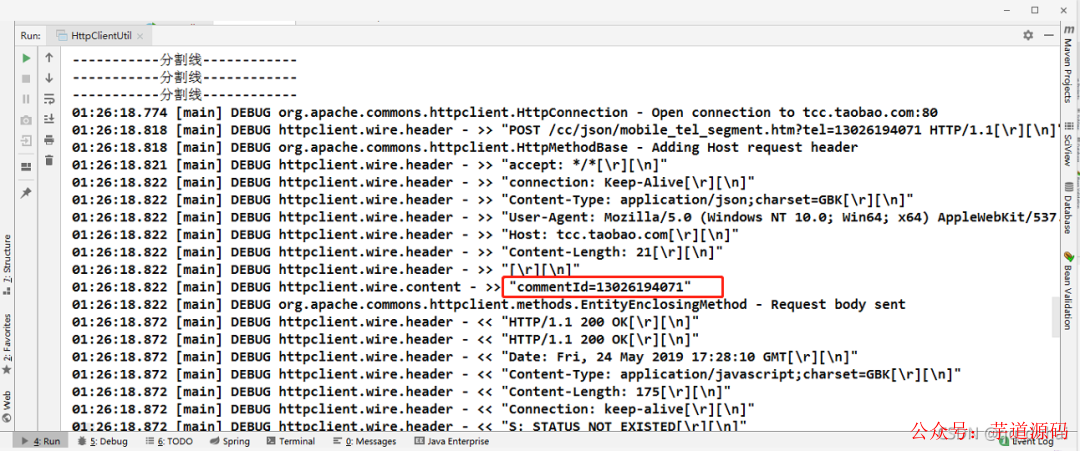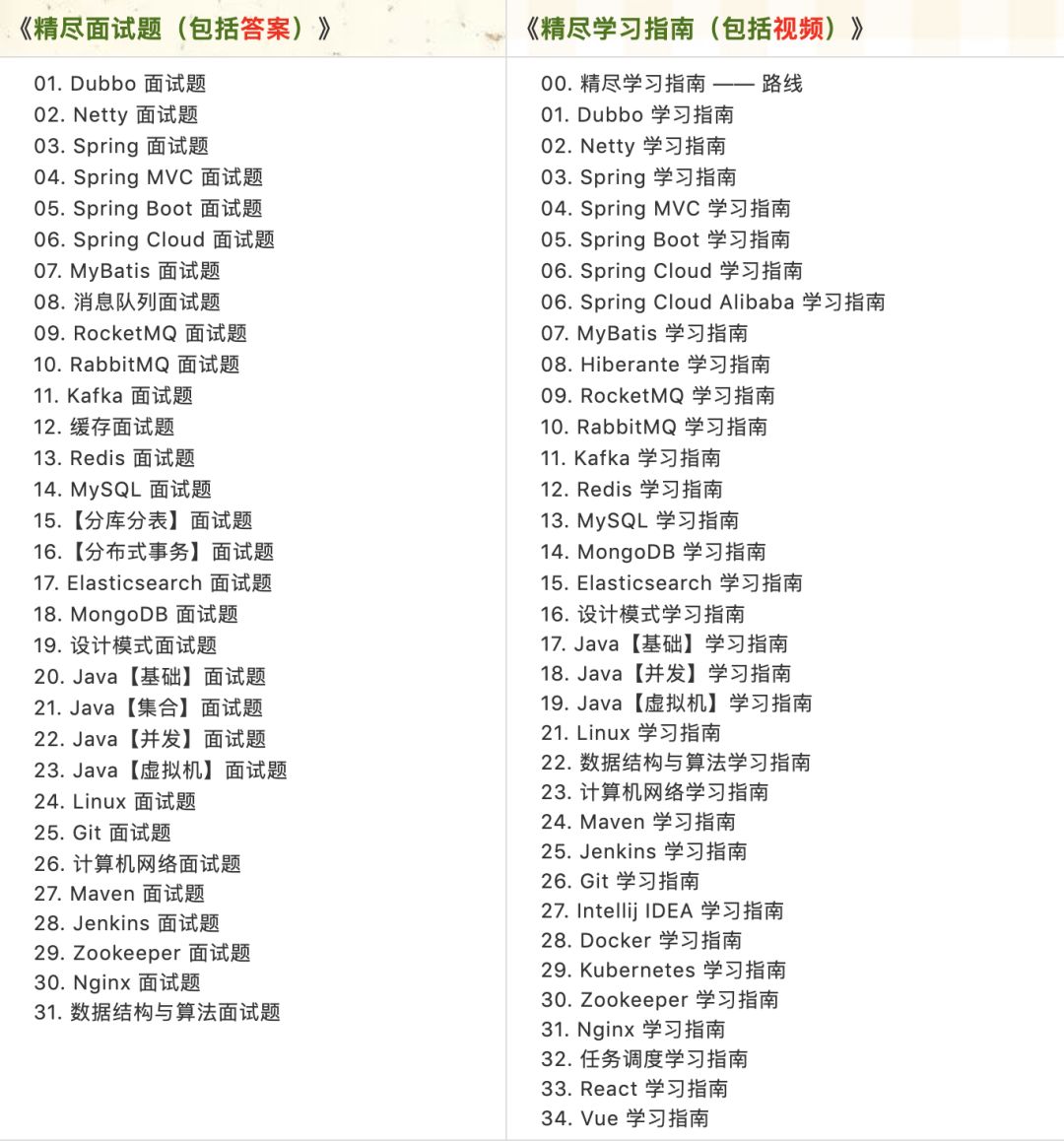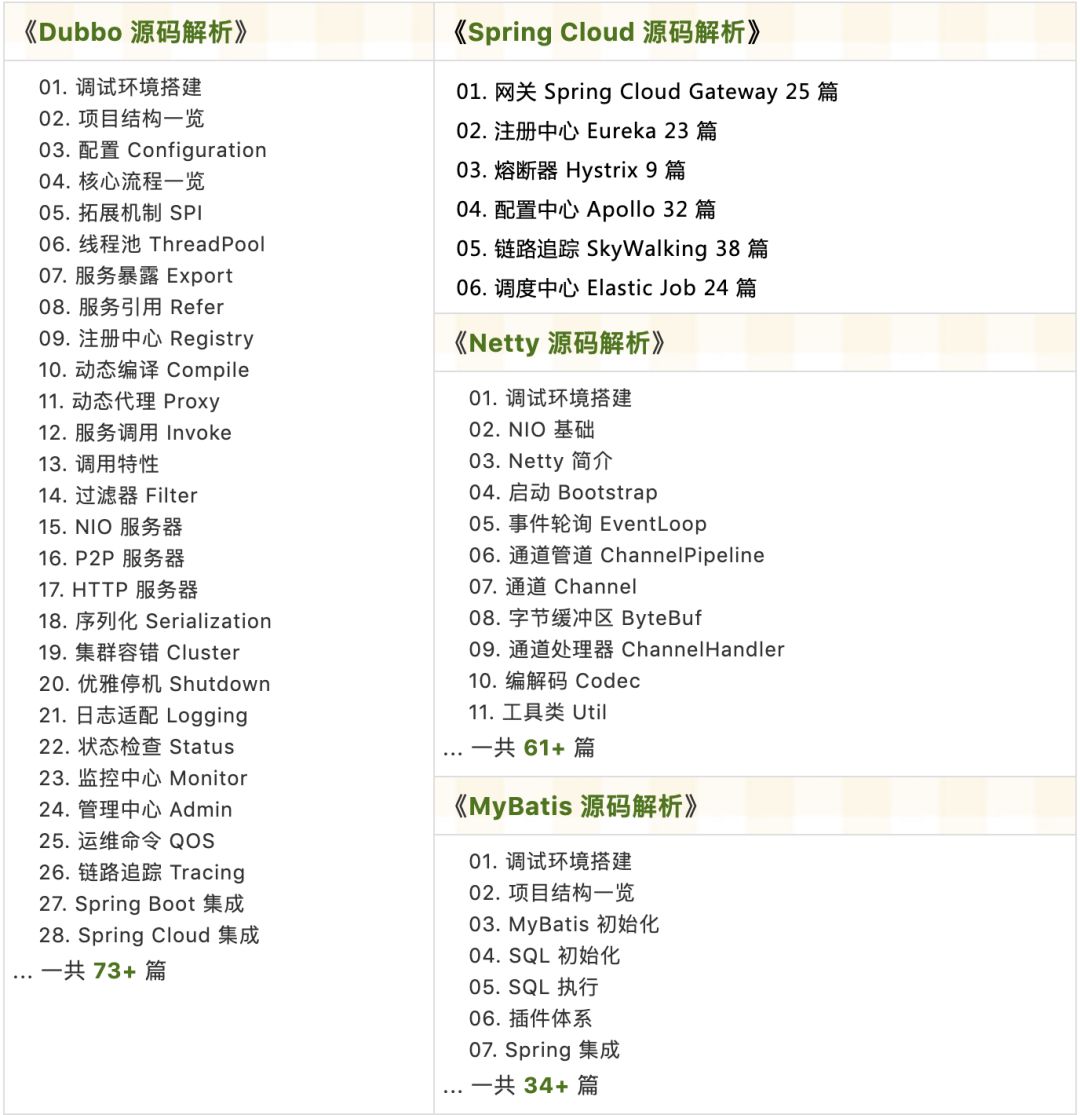点击上方“芋道源码”,选择“设为星标”
管她前浪,还是后浪?
能浪的浪,才是好浪!
每天 10:33 更新文章,每天掉亿点点头发...
源码精品专栏
一、概述
在实际开发过程中,我们经常需要调用对方提供的接口或者自己写的接口是否有接口。短信、天气等)。
Java项目中调用接口的方式有:
通过JDK网络类
Java.net.HttpURLConnection;通过
common封装好HttpClient;通过 Apache 封装好
CloseableHttpClient;通过
SpringBoot-RestTemplate;
基于 Spring Boot + MyBatis Plus + Vue & Element 实现的后台管理系统 + 用户小程序,支持 RBAC 动态权限、多租户、数据权限、工作流、三方登录、支付、短信、商城等功能
项目地址:https://gitee.com/zhijiantianya/ruoyi-vue-pro
视频教程:https://doc.iocoder.cn/video/
二、Java调用http接口的方式
2.1、通过JDK网络类Java.net.HttpURLConnection
原始比较的一种调用方法,这里get请求和post请求都可以找到一个方法里面。
实现过程:
得到:
创建远程连接
设置连接方式(get、post、put。。。)
设置连接时间
设置响应读取时间
发起请求
获取请求数据
关闭连接
邮政:
创建远程连接
设置连接方式(get、post、put。。。)
设置连接时间
设置响应读取时间
当向远程服务器传送数据/写入数据时,需要设置为true(setDoOutput)
当前向远程服务读取数据时,设置为true,该参数可有可无(setDoInput)
设置参数格式的属性:(请求参数)
设置鉴权信息:授权:(setRequestProperty)
参数设置
发起请求
获取请求数据
关闭连接
直接上代码:
package com.riemann.springbootdemo.util.common.httpConnectionUtil;
import org.springframework.lang.Nullable;
import java.io.*;
import java.net.HttpURLConnection;
import java.net.MalformedURLException;
import java.net.URL;
import java.net.URLConnection;
/**
* @author riemann
*/
public class HttpURLConnectionUtil {
/**
* Http get请求
* @param httpUrl 连接
* @return 响应数据
*/
public static String doGet(String httpUrl){
//链接
HttpURLConnection connection = null;
InputStream is = null;
BufferedReader br = null;
StringBuffer result = new StringBuffer();
try {
//创建连接
URL url = new URL(httpUrl);
connection = (HttpURLConnection) url.openConnection();
//设置请求方式
connection.setRequestMethod("GET");
//设置连接超时时间
connection.setReadTimeout(15000);
//开始连接
connection.connect();
//获取响应数据
if (connection.getResponseCode() == 200) {
//获取返回的数据
is = connection.getInputStream();
if (null != is) {
br = new BufferedReader(new InputStreamReader(is, "UTF-8"));
String temp = null;
while (null != (temp = br.readLine())) {
result.append(temp);
}
}
}
} catch (IOException e) {
e.printStackTrace();
} finally {
if (null != br) {
try {
br.close();
} catch (IOException e) {
e.printStackTrace();
}
}
if (null != is) {
try {
is.close();
} catch (IOException e) {
e.printStackTrace();
}
}
//关闭远程连接
connection.disconnect();
}
return result.toString();
}
/**
* Http post请求
* @param httpUrl 连接
* @param param 参数
* @return
*/
public static String doPost(String httpUrl, @Nullable String param) {
StringBuffer result = new StringBuffer();
//连接
HttpURLConnection connection = null;
OutputStream os = null;
InputStream is = null;
BufferedReader br = null;
try {
//创建连接对象
URL url = new URL(httpUrl);
//创建连接
connection = (HttpURLConnection) url.openConnection();
//设置请求方法
connection.setRequestMethod("POST");
//设置连接超时时间
connection.setConnectTimeout(15000);
//设置读取超时时间
connection.setReadTimeout(15000);
//DoOutput设置是否向httpUrlConnection输出,DoInput设置是否从httpUrlConnection读入,此外发送post请求必须设置这两个
//设置是否可读取
connection.setDoOutput(true);
connection.setDoInput(true);
//设置通用的请求属性
connection.setRequestProperty("accept", "*/*");
connection.setRequestProperty("connection", "Keep-Alive");
connection.setRequestProperty("user-agent", "Mozilla/4.0 (compatible; MSIE 6.0; Windows NT 5.1; SV1)");
connection.setRequestProperty("Content-Type", "application/json;charset=utf-8");
//拼装参数
if (null != param && param.equals("")) {
//设置参数
os = connection.getOutputStream();
//拼装参数
os.write(param.getBytes("UTF-8"));
}
//设置权限
//设置请求头等
//开启连接
//connection.connect();
//读取响应
if (connection.getResponseCode() == 200) {
is = connection.getInputStream();
if (null != is) {
br = new BufferedReader(new InputStreamReader(is, "GBK"));
String temp = null;
while (null != (temp = br.readLine())) {
result.append(temp);
result.append("\r\n");
}
}
}
} catch (MalformedURLException e) {
e.printStackTrace();
} catch (IOException e) {
e.printStackTrace();
} finally {
//关闭连接
if(br!=null){
try {
br.close();
} catch (IOException e) {
e.printStackTrace();
}
}
if(os!=null){
try {
os.close();
} catch (IOException e) {
e.printStackTrace();
}
}
if(is!=null){
try {
is.close();
} catch (IOException e) {
e.printStackTrace();
}
}
//关闭连接
connection.disconnect();
}
return result.toString();
}
public static void main(String[] args) {
String message = doPost("https://tcc.taobao.com/cc/json/mobile_tel_segment.htm?tel=13026194071", "");
System.out.println(message);
}
}运行结果:

2.2 通过apache通用封装好的HttpClient
httpClient的get或post请求方式步骤:
生成一个HttpClient对象并设置相应的参数;
生成一个GetMethod对象或PostMethod并设置响应的参数;
用HttpClient生成的对象来执行GetMethod生成的Get方法;
处理响应状态码;
如果正常响应,处理HTTP响应内容;
释放连接。
导入以下jar包:
<!--HttpClient-->
<dependency>
<groupId>commons-httpclient</groupId>
<artifactId>commons-httpclient</artifactId>
<version>3.1</version>
</dependency>
<!--fastjson-->
<dependency>
<groupId>com.alibaba</groupId>
<artifactId>fastjson</artifactId>
<version>1.2.32</version>
</dependency>代码如下:
package com.riemann.springbootdemo.util.common.httpConnectionUtil;
import com.alibaba.fastjson.JSONObject;
import org.apache.commons.httpclient.*;
import org.apache.commons.httpclient.methods.GetMethod;
import org.apache.commons.httpclient.methods.PostMethod;
import org.apache.commons.httpclient.params.HttpMethodParams;
import java.io.IOException;
/**
* @author riemann
*/
public class HttpClientUtil {
/**
* httpClient的get请求方式
* 使用GetMethod来访问一个URL对应的网页实现步骤:
* 1.生成一个HttpClient对象并设置相应的参数;
* 2.生成一个GetMethod对象并设置响应的参数;
* 3.用HttpClient生成的对象来执行GetMethod生成的Get方法;
* 4.处理响应状态码;
* 5.若响应正常,处理HTTP响应内容;
* 6.释放连接。
* @param url
* @param charset
* @return
*/
public static String doGet(String url, String charset) {
//1.生成HttpClient对象并设置参数
HttpClient httpClient = new HttpClient();
//设置Http连接超时为5秒
httpClient.getHttpConnectionManager().getParams().setConnectionTimeout(5000);
//2.生成GetMethod对象并设置参数
GetMethod getMethod = new GetMethod(url);
//设置get请求超时为5秒
getMethod.getParams().setParameter(HttpMethodParams.SO_TIMEOUT, 5000);
//设置请求重试处理,用的是默认的重试处理:请求三次
getMethod.getParams().setParameter(HttpMethodParams.RETRY_HANDLER, new DefaultHttpMethodRetryHandler());
String response = "";
//3.执行HTTP GET 请求
try {
int statusCode = httpClient.executeMethod(getMethod);
//4.判断访问的状态码
if (statusCode != HttpStatus.SC_OK) {
System.err.println("请求出错:" + getMethod.getStatusLine());
}
//5.处理HTTP响应内容
//HTTP响应头部信息,这里简单打印
Header[] headers = getMethod.getResponseHeaders();
for(Header h : headers) {
System.out.println(h.getName() + "---------------" + h.getValue());
}
//读取HTTP响应内容,这里简单打印网页内容
//读取为字节数组
byte[] responseBody = getMethod.getResponseBody();
response = new String(responseBody, charset);
System.out.println("-----------response:" + response);
//读取为InputStream,在网页内容数据量大时候推荐使用
//InputStream response = getMethod.getResponseBodyAsStream();
} catch (HttpException e) {
//发生致命的异常,可能是协议不对或者返回的内容有问题
System.out.println("请检查输入的URL!");
e.printStackTrace();
} catch (IOException e) {
//发生网络异常
System.out.println("发生网络异常!");
} finally {
//6.释放连接
getMethod.releaseConnection();
}
return response;
}
/**
* post请求
* @param url
* @param json
* @return
*/
public static String doPost(String url, JSONObject json){
HttpClient httpClient = new HttpClient();
PostMethod postMethod = new PostMethod(url);
postMethod.addRequestHeader("accept", "*/*");
postMethod.addRequestHeader("connection", "Keep-Alive");
//设置json格式传送
postMethod.addRequestHeader("Content-Type", "application/json;charset=GBK");
//必须设置下面这个Header
postMethod.addRequestHeader("User-Agent", "Mozilla/5.0 (Windows NT 10.0; Win64; x64) AppleWebKit/537.36 (KHTML, like Gecko) Chrome/58.0.3029.81 Safari/537.36");
//添加请求参数
postMethod.addParameter("commentId", json.getString("commentId"));
String res = "";
try {
int code = httpClient.executeMethod(postMethod);
if (code == 200){
res = postMethod.getResponseBodyAsString();
System.out.println(res);
}
} catch (IOException e) {
e.printStackTrace();
}
return res;
}
public static void main(String[] args) {
System.out.println(doGet("http://tcc.taobao.com/cc/json/mobile_tel_segment.htm?tel=13026194071", "GBK"));
System.out.println("-----------分割线------------");
System.out.println("-----------分割线------------");
System.out.println("-----------分割线------------");
JSONObject jsonObject = new JSONObject();
jsonObject.put("commentId", "13026194071");
System.out.println(doPost("http://tcc.taobao.com/cc/json/mobile_tel_segment.htm?tel=13026194071", jsonObject));
}
}运行结果:
2.3 通过Apache封装好的CloseableHttpClient
CloseableHttpClient是在HttpClient的基础上修改可以更新而来的,这里还涉及到请求头的设置(请求),利用fastjson转换请求或返回请求结果字符串为json格式,当然方式也是设置头token、 json的,这里只在下面说明。
导入以下jar包:
<!--CloseableHttpClient-->
<dependency>
<groupId>org.apache.httpcomponents</groupId>
<artifactId>httpclient</artifactId>
<version>4.5.2</version>
</dependency>
<!--fastjson-->
<dependency>
<groupId>com.alibaba</groupId>
<artifactId>fastjson</artifactId>
<version>1.2.32</version>
</dependency>代码如下:
package com.riemann.springbootdemo.util.common.httpConnectionUtil;
import com.alibaba.fastjson.JSONObject;
import org.apache.http.HttpResponse;
import org.apache.http.HttpStatus;
import org.apache.http.client.methods.CloseableHttpResponse;
import org.apache.http.client.methods.HttpGet;
import org.apache.http.client.methods.HttpPost;
import org.apache.http.entity.StringEntity;
import org.apache.http.impl.client.CloseableHttpClient;
import org.apache.http.impl.client.HttpClientBuilder;
import org.apache.http.util.EntityUtils;
import java.io.IOException;
import java.io.UnsupportedEncodingException;
/**
* @author riemann
*/
public class CloseableHttpClientUtil {
private static String tokenString = "";
private static String AUTH_TOKEN_EXPIRED = "AUTH_TOKEN_EXPIRED";
private static CloseableHttpClient httpClient = null;
/**
* 以get方式调用第三方接口
* @param url
* @param token
* @return
*/
public static String doGet(String url, String token) {
//创建HttpClient对象
CloseableHttpClient httpClient = HttpClientBuilder.create().build();
HttpGet httpGet = new HttpGet(url);
if (null != tokenString && !tokenString.equals("")) {
tokenString = getToken();
}
//api_gateway_auth_token自定义header头,用于token验证使用
httpGet.addHeader("api_gateway_auth_token",tokenString);
httpGet.addHeader("User-Agent", "Mozilla/5.0 (Windows NT 10.0; Win64; x64) AppleWebKit/537.36 (KHTML, like Gecko) Chrome/58.0.3029.81 Safari/537.36");
try {
HttpResponse response = httpClient.execute(httpGet);
if (response.getStatusLine().getStatusCode() == HttpStatus.SC_OK) {
//返回json格式
String res = EntityUtils.toString(response.getEntity());
return res;
}
} catch (IOException e) {
e.printStackTrace();
}
return null;
}
/**
* 以post方式调用第三方接口
* @param url
* @param json
* @return
*/
public static String doPost(String url, JSONObject json) {
if (null == httpClient) {
httpClient = HttpClientBuilder.create().build();
}
HttpPost httpPost = new HttpPost(url);
if (null != tokenString && tokenString.equals("")) {
tokenString = getToken();
}
//api_gateway_auth_token自定义header头,用于token验证使用
httpPost.addHeader("api_gateway_auth_token", tokenString);
httpPost.addHeader("User-Agent", "Mozilla/5.0 (Windows NT 10.0; Win64; x64) AppleWebKit/537.36 (KHTML, like Gecko) Chrome/58.0.3029.81 Safari/537.36");
try {
StringEntity se = new StringEntity(json.toString());
se.setContentEncoding("UTF-8");
//发送json数据需要设置contentType
se.setContentType("application/x-www-form-urlencoded");
//设置请求参数
httpPost.setEntity(se);
HttpResponse response = httpClient.execute(httpPost);
if (response.getStatusLine().getStatusCode() == HttpStatus.SC_OK) {
//返回json格式
String res = EntityUtils.toString(response.getEntity());
return res;
}
} catch (IOException e) {
e.printStackTrace();
} finally {
if (httpClient != null){
try {
httpClient.close();
} catch (IOException e) {
e.printStackTrace();
}
}
}
return null;
}
/**
* 获取第三方接口的token
*/
public static String getToken() {
String token = "";
JSONObject object = new JSONObject();
object.put("appid", "appid");
object.put("secretkey", "secretkey");
if (null == httpClient) {
httpClient = HttpClientBuilder.create().build();
}
HttpPost httpPost = new HttpPost("http://localhost/login");
httpPost.addHeader("User-Agent", "Mozilla/5.0 (Windows NT 10.0; Win64; x64) AppleWebKit/537.36 (KHTML, like Gecko) Chrome/58.0.3029.81 Safari/537.36");
try {
StringEntity se = new StringEntity(object.toString());
se.setContentEncoding("UTF-8");
//发送json数据需要设置contentType
se.setContentType("application/x-www-form-urlencoded");
//设置请求参数
httpPost.setEntity(se);
HttpResponse response = httpClient.execute(httpPost);
//这里可以把返回的结果按照自定义的返回数据结果,把string转换成自定义类
//ResultTokenBO result = JSONObject.parseObject(response, ResultTokenBO.class);
//把response转为jsonObject
JSONObject result = (JSONObject) JSONObject.parseObject(String.valueOf(response));
if (result.containsKey("token")) {
token = result.getString("token");
}
} catch (IOException e) {
e.printStackTrace();
}
return token;
}
/**
* 测试
*/
public static void test(String telephone) {
JSONObject object = new JSONObject();
object.put("telephone", telephone);
//首先获取token
tokenString = getToken();
String response = doPost("http://localhost/searchUrl", object);
//如果返回的结果是list形式的,需要使用JSONObject.parseArray转换
//List<Result> list = JSONObject.parseArray(response, Result.class);
System.out.println(response);
}
public static void main(String[] args) {
test("12345678910");
}
}2.4 通过SpringBoot-RestTemplate
springBoot-RestTemple是这些代码的集合的大成者,编写简单,目前可以采用的调用接口有:
delete()
HTTP DELETE在特定操作的 URL 上对资源执行exchange() 在URL上执行特定的HTTP方法,返回包含对象的
ResponseEntity,这个对象是从请求体中映射到的execute() 在上执行特定的HTTP方法,返回一个从响应体映射到的对象
get) 发送一个
HTTP GET请求返回的ResponseEntity包含了响应体,映射成的对象getForObject() 发送
HTTP GET请求,返回的请求体将映射为一个对象postForEntity() POST 数据到一个URL,返回包含一个对象的
ResponseEntity,这个对象是从响应体中映射的postForObject() POST 数据到一个 URL,返回根据响应体形成的对象
headForHeaders() 发送
HTTP HEAD请求,返回包含特定资源URL的HTTP头optionsForAllow() 发送
HTTP OPTIONS请求,返回对特定URL的Allow头信息postForLocation() POST 数据到一个 URL,返回新创建资源的 URL
put() PUT 资源到特定的 URL
首先导入springboot的web包
<parent>
<groupId>org.springframework.boot</groupId>
<artifactId>spring-boot-starter-parent</artifactId>
<version>2.0.4.RELEASE</version>
</parent>
<dependencies>
<!--CloseableHttpClient-->
<dependency>
<groupId>org.apache.httpcomponents</groupId>
<artifactId>httpclient</artifactId>
<version>4.5.2</version>
</dependency>
<!--spring restTemplate-->
<!-- @ConfigurationProperties annotation processing (metadata for IDEs)
生成spring-configuration-metadata.json类,需要引入此类-->
<dependency>
<groupId>org.springframework.boot</groupId>
<artifactId>spring-boot-configuration-processor</artifactId>
<optional>true</optional>
</dependency>
<dependency>
<groupId>org.springframework.boot</groupId>
<artifactId>spring-boot-starter-aop</artifactId>
</dependency>
<dependency>
<groupId>org.springframework.boot</groupId>
<artifactId>spring-boot-starter-web</artifactId>
<exclusions>
<exclusion>
<groupId>org.springframework.boot</groupId>
<artifactId>spring-boot-starter-tomcat</artifactId>
</exclusion>
</exclusions>
</dependency>
<dependency>
<groupId>org.springframework.boot</groupId>
<artifactId>spring-boot-starter-jetty</artifactId>
</dependency>
<dependency>
<groupId>org.springframework.boot</groupId>
<artifactId>spring-boot-starter-test</artifactId>
<scope>test</scope>
</dependency>
</dependencies>在启动类同包下创建RestTemplateConfig.java类
import org.springframework.context.annotation.Bean;
import org.springframework.context.annotation.Configuration;
import org.springframework.http.client.ClientHttpRequestFactory;
import org.springframework.http.client.SimpleClientHttpRequestFactory;
import org.springframework.web.client.RestTemplate;
/**
* @author riemann
*/
@Configuration
public class RestTemplateConfig {
@Bean
public RestTemplate restTemplate(ClientHttpRequestFactory factory){
return new RestTemplate(factory);
}
@Bean
public ClientHttpRequestFactory simpleClientHttpRequestFactory(){
SimpleClientHttpRequestFactory factory = new SimpleClientHttpRequestFactory();
factory.setConnectTimeout(15000);
factory.setReadTimeout(5000);
return factory;
}
}然后在Service类(RestTemplateToInterface)中注入使用
具体代码如下:
import com.alibaba.fastjson.JSONObject;
import com.swordfall.model.User;
import org.springframework.beans.factory.annotation.Autowired;
import org.springframework.http.*;
import org.springframework.stereotype.Service;
import org.springframework.web.client.RestTemplate;
/**
* @author riemann
*/
@Service
public class RestTemplateToInterface {
@Autowired
private RestTemplate restTemplate;
/**
* 以get方式请求第三方http接口 getForEntity
* @param url
* @return
*/
public User doGetWith1(String url){
ResponseEntity<User> responseEntity = restTemplate.getForEntity(url, User.class);
User user = responseEntity.getBody();
return user;
}
/**
* 以get方式请求第三方http接口 getForObject
* 返回值返回的是响应体,省去了我们再去getBody()
* @param url
* @return
*/
public User doGetWith2(String url){
User user = restTemplate.getForObject(url, User.class);
return user;
}
/**
* 以post方式请求第三方http接口 postForEntity
* @param url
* @return
*/
public String doPostWith1(String url){
User user = new User("小白", 20);
ResponseEntity<String> responseEntity = restTemplate.postForEntity(url, user, String.class);
String body = responseEntity.getBody();
return body;
}
/**
* 以post方式请求第三方http接口 postForEntity
* @param url
* @return
*/
public String doPostWith2(String url){
User user = new User("小白", 20);
String body = restTemplate.postForObject(url, user, String.class);
return body;
}
/**
* exchange
* @return
*/
public String doExchange(String url, Integer age, String name){
//header参数
HttpHeaders headers = new HttpHeaders();
String token = "asdfaf2322";
headers.add("authorization", token);
headers.setContentType(MediaType.APPLICATION_JSON);
//放入body中的json参数
JSONObject obj = new JSONObject();
obj.put("age", age);
obj.put("name", name);
//组装
HttpEntity<JSONObject> request = new HttpEntity<>(obj, headers);
ResponseEntity<String> responseEntity = restTemplate.exchange(url, HttpMethod.POST, request, String.class);
String body = responseEntity.getBody();
return body;
}
}2.5 通过okhttp
现在也是蛮流行的,基于手机端很火的,这里分享一下OkHttpClient客户端,业务代码get、post请求直接调用http就好了。
pom文件引入依赖包
<dependency>
<groupId>com.squareup.okhttp3</groupId>
<artifactId>okhttp</artifactId>
<version>3.10.0</version>
</dependency>
@Slf4j
public class OkHttpClient {
private static final MediaType JSON = MediaType.parse("application/json; charset=utf-8");
private volatile static okhttp3.OkHttpClient client;
private static final int MAX_IDLE_CONNECTION = Integer
.parseInt(ConfigManager.get("httpclient.max_idle_connection"));
private static final long KEEP_ALIVE_DURATION = Long
.parseLong(ConfigManager.get("httpclient.keep_alive_duration"));
private static final long CONNECT_TIMEOUT = Long.parseLong(ConfigManager.get("httpclient.connectTimeout"));
private static final long READ_TIMEOUT = Long.parseLong(ConfigManager.get("httpclient. "));
/**
* 单例模式(双重检查模式) 获取类实例
*
* @return client
*/
private static okhttp3.OkHttpClient getInstance() {
if (client == null) {
synchronized (okhttp3.OkHttpClient.class) {
if (client == null) {
client = new okhttp3.OkHttpClient.Builder()
.connectTimeout(CONNECT_TIMEOUT, TimeUnit.SECONDS)
.readTimeout(READ_TIMEOUT, TimeUnit.SECONDS)
.connectionPool(new ConnectionPool(MAX_IDLE_CONNECTION, KEEP_ALIVE_DURATION,
TimeUnit.MINUTES))
.build();
}
}
}
return client;
}
public static String syncPost(String url, String json) throws IOException {
RequestBody body = RequestBody.create(JSON, json);
Request request = new Request.Builder()
.url(url)
.post(body)
.build();
try {
Response response = OkHttpClient.getInstance().newCall(request).execute();
if (response.isSuccessful()) {
String result = response.body().string();
log.info("syncPost response = {}, responseBody= {}", response, result);
return result;
}
String result = response.body().string();
log.info("syncPost response = {}, responseBody= {}", response, result);
throw new IOException("三方接口返回http状态码为" + response.code());
} catch (Exception e) {
log.error("syncPost() url:{} have a ecxeption {}", url, e);
throw new RuntimeException("syncPost() have a ecxeption {}" + e.getMessage());
}
}
public static String syncGet(String url, Map<String, Object> headParamsMap) throws IOException {
Request request;
final Request.Builder builder = new Request.Builder().url(url);
try {
if (!CollectionUtils.isEmpty(headParamsMap)) {
final Iterator<Map.Entry<String, Object>> iterator = headParamsMap.entrySet()
.iterator();
while (iterator.hasNext()) {
final Map.Entry<String, Object> entry = iterator.next();
builder.addHeader(entry.getKey(), (String) entry.getValue());
}
}
request = builder.build();
Response response = OkHttpClient.getInstance().newCall(request).execute();
String result = response.body().string();
log.info("syncGet response = {},responseBody= {}", response, result);
if (!response.isSuccessful()) {
throw new IOException("三方接口返回http状态码为" + response.code());
}
return result;
} catch (Exception e) {
log.error("remote interface url:{} have a ecxeption {}", url, e);
throw new RuntimeException("三方接口返回异常");
}
}
}欢迎加入我的知识星球,一起探讨架构,交流源码。加入方式,长按下方二维码噢:

已在知识星球更新源码解析如下:
最近更新《芋道 SpringBoot 2.X 入门》系列,已经 101 余篇,覆盖了 MyBatis、Redis、MongoDB、ES、分库分表、读写分离、SpringMVC、Webflux、权限、WebSocket、Dubbo、RabbitMQ、RocketMQ、Kafka、性能测试等等内容。
提供近 3W 行代码的 SpringBoot 示例,以及超 4W 行代码的电商微服务项目。
获取方式:点“在看”,关注公众号并回复 666 领取,更多内容陆续奉上。
文章有帮助的话,在看,转发吧。
谢谢支持哟 (*^__^*)


























 2203
2203











 被折叠的 条评论
为什么被折叠?
被折叠的 条评论
为什么被折叠?








